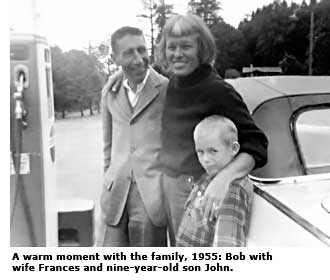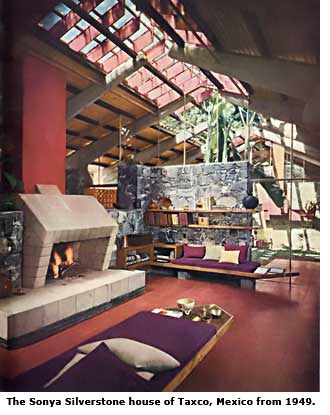Eichler Architect, Bob Anshen: Self-Made Man - Page 2
"He would kiss your hand and it wasn't an affectation," says Helen Olsen, a designer and Donald's wife. "It was natural for Bob to do this. I enjoyed him. He was completely different from anyone else I've ever run into, really. I could see why he would get clients, because he would sit and listen and even seem interested in what you had to say."
"If Anshen and Allen is bread," Olsen says, "Steve Allen is the dough, and Anshen is the yeast—the perfect combination."
"The relationship between those two was extraordinary," Parker says, "and because of their differences, and the way they were able to resolve their differences, they made each other better."

Anshen and Allen—whose relationship became one of the profession's great friendships—were known for welcoming young architects to the area, often hiring them on the spot.
When architects Warren Callister and Jack Hillmer arrived in San Francisco right after the war, they scoped out the scene by visiting all the modern architects. "Most of them said maybe you'd like to go to Seattle or Portland, go somewhere else," Hillmer remembered. "I've always loved Bob Anshen, because his reaction was just the reverse. He said, 'I hope you'll stay here, because we need all the good architects we can get.'"
The story told most often about Anshen and Allen, though somewhat differently each time, concerns how they secured their first job.
The young architects, having gone through the staid school of architecture at the University of Pennsylvania, were working for separate small San Francisco firms in the late 1930s when word got out that Ralph K. Davies, vice president and marketing genius for Standard Oil of California (he devised its Chevron logo) wanted a house. A Tudor house.
But why would Davies talk to two unknowns? Anshen recalled a scene from a Horatio Alger book he'd read at age seven. He and Allen composed a letter to Davies saying they knew his time was worth money, so they would pay him $100 for a half hour of it to make their presentation. Each borrowed $50 from their bosses.
"We recommended a house that would have all of the qualities, the warmth, the charm and spirit of a Tudor house, with the amenities, the forms, and techniques of the present day," Allen wrote in a tribute to Davies, years later. The house in Woodside was completed a few days before the attack on Pearl Harbor.

The 6,000-square-foot Davies house won both press attention and the firm its staunchest patron. Designing Standard Oil stations became a mainstay for the partners after the war; they designed an office tower, the International Building, in 1957 for American President Lines—which Davies took over in the 1950s; they also designed APL staterooms; another house for Davies; and found much work, through friends and associates of Davies, including buildings for the University of California.
Both the Sonya Silverstone house in Taxco, Mexico, from 1949, and the Chapel of the Holy Cross in Sedona, Arizona, among Anshen and Allen's most praised works, came to them from friends of Davies.
Pearl Harbor sent Davies to Washington, where he supervised the American petroleum industry for the government. It sent Allen into the Navy.
Anshen snagged a job overseeing war housing for the Vallejo Housing Authority. Anshen and his wife Eleanor also wrote for progressive architectural magazines and Anshen lectured about America's need for rational, national, and regional planning. Like his colleagues in the progressive planning association Telesis, he wanted to see Bay Area cities and special districts consolidate into one regional government.
The Anshens called for the massive, postwar production of public housing, along with privately built housing, and expected much of it to be prefabricated in the factory.
"There should be continued public control over all developments, which would include regulation of population density and building density," they wrote.

The Anshens were also mainstays at the California Labor School during the war and shortly thereafter.
The school, a center for the Bay Area's left wing intelligentsia, featured lectures, workshops and classes on architecture, art, folk dancing, and more. Like so many at the time, Donald Olsen says, Anshen proclaimed his interest in Marxism and had a library to prove it.
In 1947 the Anshens were investigated, along with most of the school, by the state legislature's Joint Fact-Finding Committee on Un-American Activities, which called the school "a Stalin-directed institution of propaganda to indoctrinate veterans with hatred for both the people and the government of the United States."




